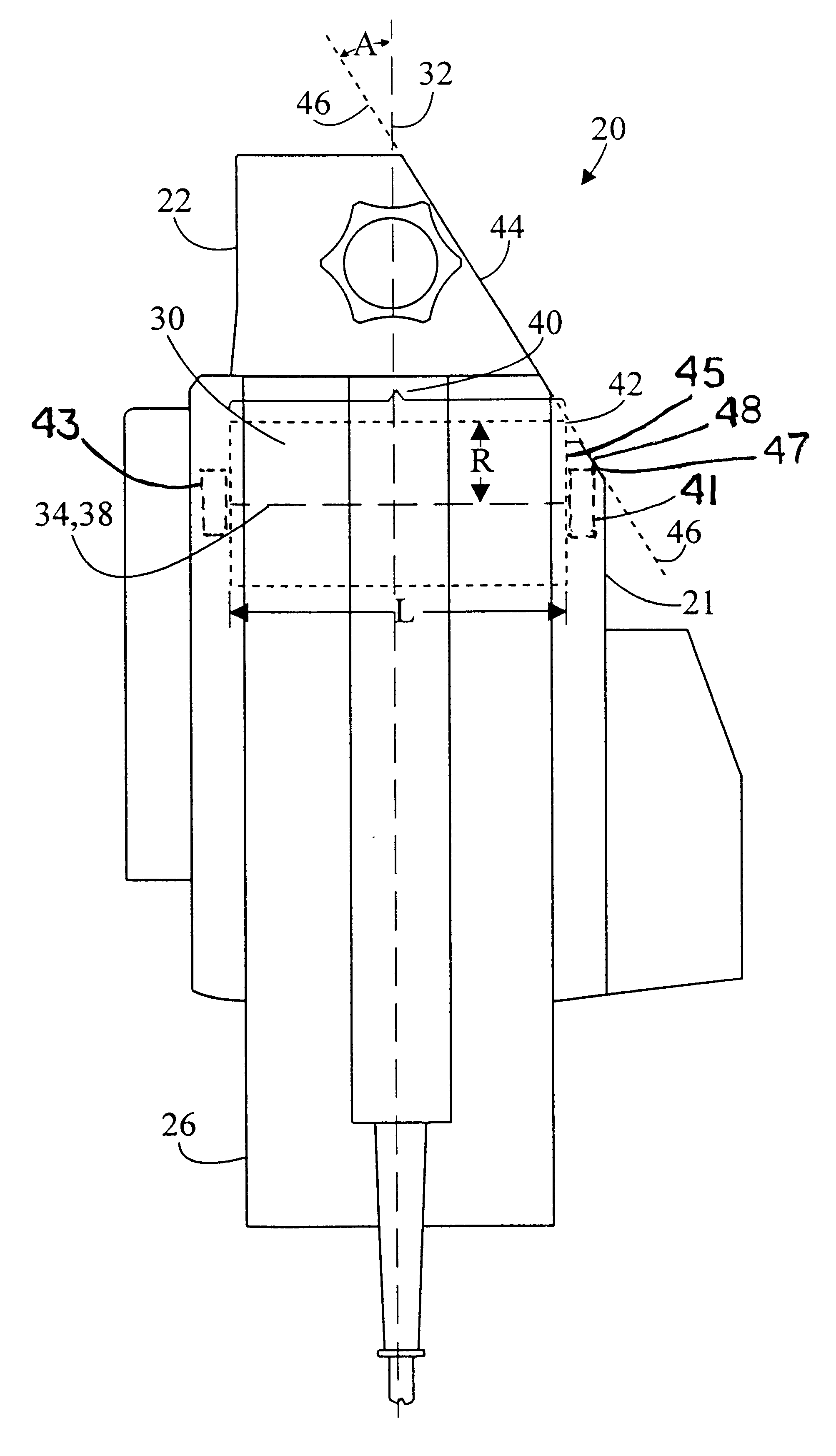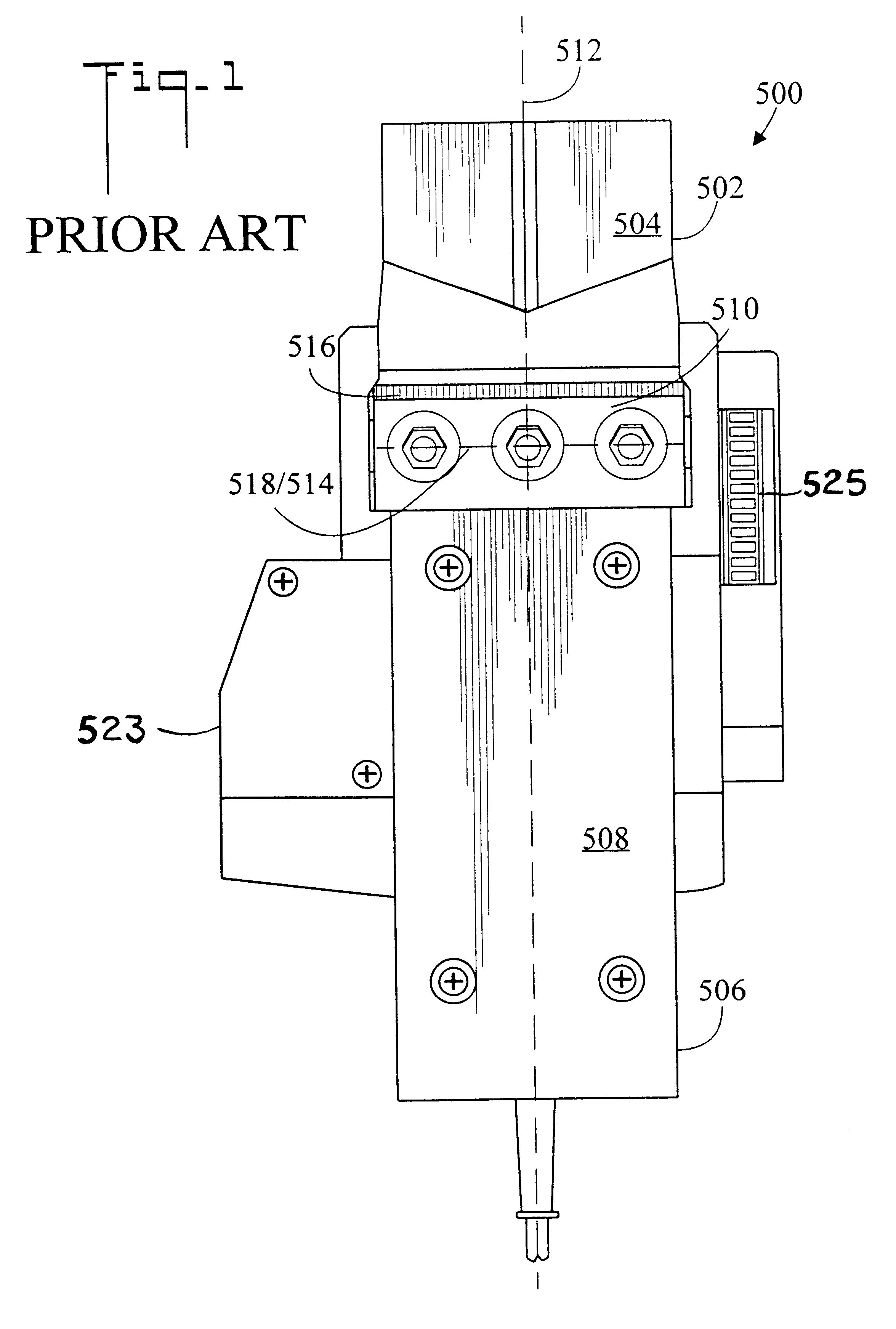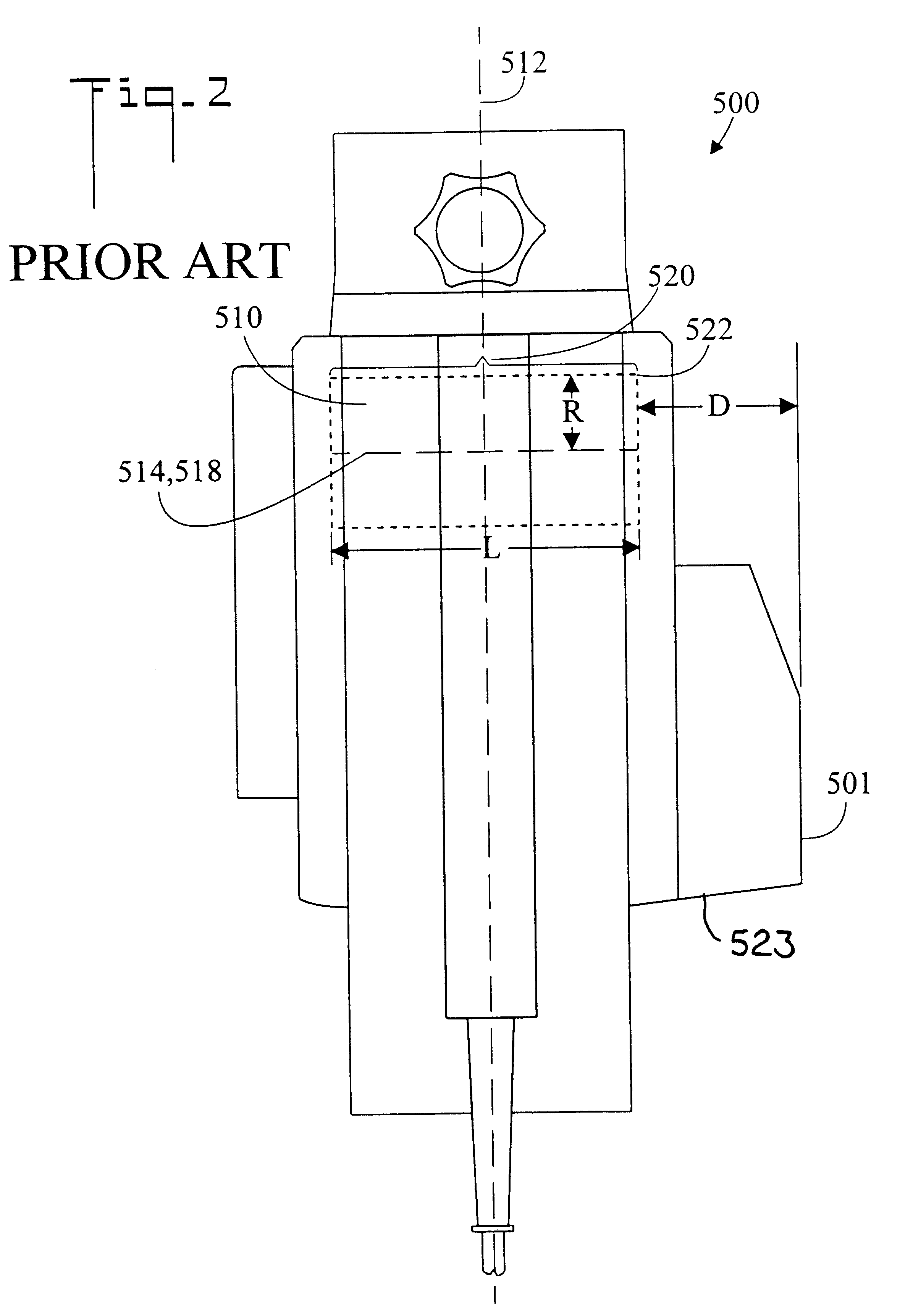Power inside corner planer and method of use
a power inside corner and power planer technology, applied in hand planes, roofs, building materials handling, etc., can solve the problems of buckling or warping of studs, and the conventional electric power planer is not very useful on an inside corner
- Summary
- Abstract
- Description
- Claims
- Application Information
AI Technical Summary
Benefits of technology
Problems solved by technology
Method used
Image
Examples
second embodiment
FIGS. 6 and 11 show that a power inside corner planer can be constructed with an angled side on either the right or left. Because of the throw of the chips away from the planer, it is generally more desirable to have the chips thrown down away from the operator instead of up where they can ricochet around and the smaller particles can float around. This means that the preferred method for using an inside corner planer is to push it up in the corner. Since half of the sides of corners to be planed are on the right side and half of the sides are on the left side, inside comer planers of both the first and second embodiment would be useful to a carpenter.
FIGS. 12 and 13 are bottom plan and top plan views, respectively, of a third embodiment of the planer of the present invention, generally designated as 120. The third embodiment combines the features of both the first and second embodiments of FIGS. 6 and 11. It has angled sides on both sides so that it may be pushed up in an inner com...
third embodiment
In the third embodiment, cutter assembly 130 is separated into two cutters, right cutter 133 and left cutter 135, by a central drive belt 131. The requirement for a central drive belt 131 will leave a small unplaned area in the middle. This unplaned area is somewhat minimized by the fact that the cutter 130 operates at an angle so that the unplaned width is always less than the width of the belt. Also, cutter assembly 130 can be constructed so that each of its left and right cutters 133 and 135 are wide enough to independently complete a corner planing job by itself.
FIG. 14 is a reduced top plan elevation view of the third embodiment planer 120 planing a surface 604 adjacent a left interfering structure 606, and FIG. 15 is a reduced top plan view of the third embodiment planer 120 planing a surface 600 adjacent right interfering structure 602. The advantage of planer 120 is that it may plane close to two opposite interfering structures 602 and 606 while only being moved in an upward...
PUM
 Login to View More
Login to View More Abstract
Description
Claims
Application Information
 Login to View More
Login to View More - R&D
- Intellectual Property
- Life Sciences
- Materials
- Tech Scout
- Unparalleled Data Quality
- Higher Quality Content
- 60% Fewer Hallucinations
Browse by: Latest US Patents, China's latest patents, Technical Efficacy Thesaurus, Application Domain, Technology Topic, Popular Technical Reports.
© 2025 PatSnap. All rights reserved.Legal|Privacy policy|Modern Slavery Act Transparency Statement|Sitemap|About US| Contact US: help@patsnap.com



